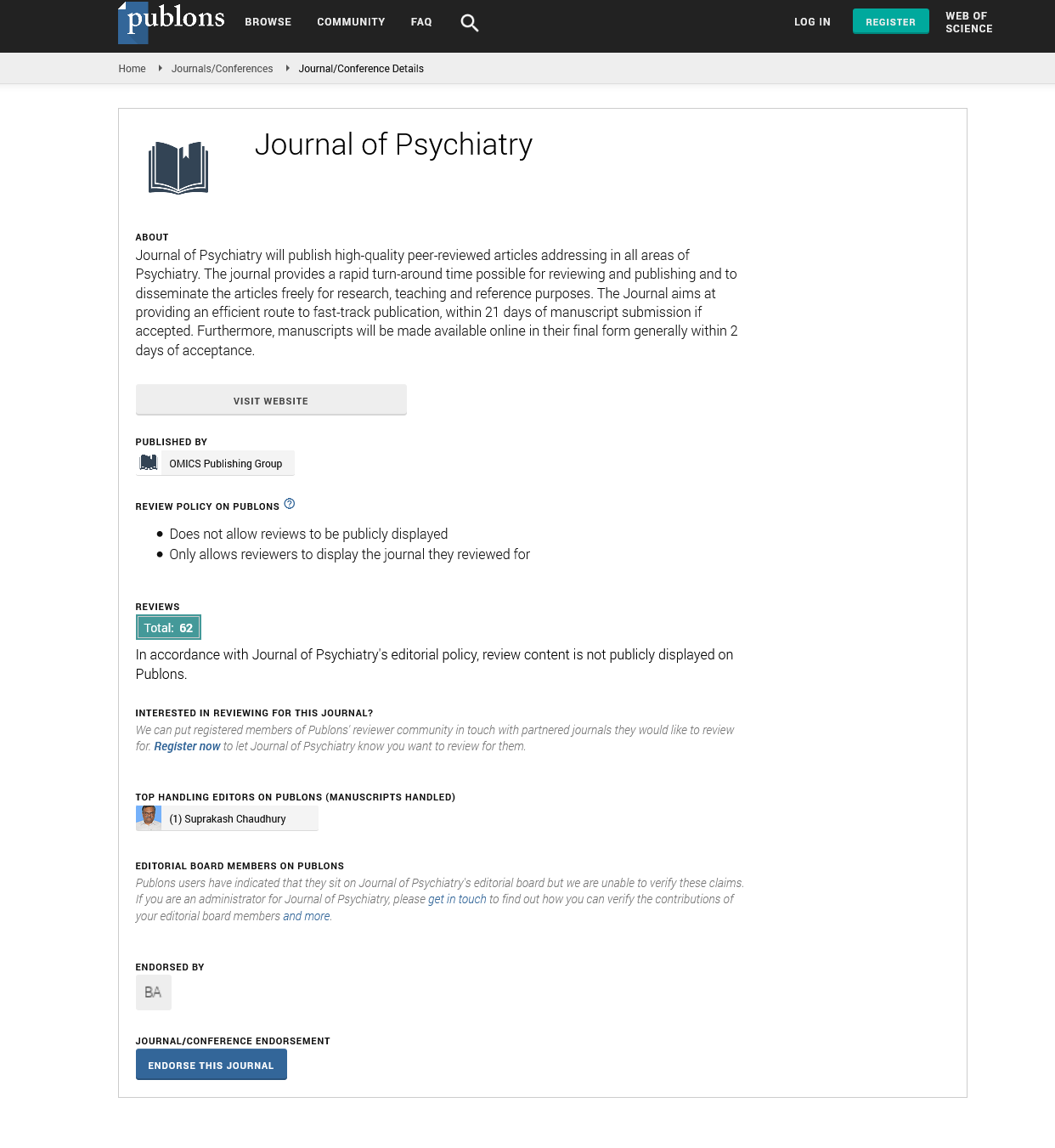PMC/PubMed Indexed Articles
Indexed In
- RefSeek
- Hamdard University
- EBSCO A-Z
- OCLC- WorldCat
- SWB online catalog
- Publons
- International committee of medical journals editors (ICMJE)
- Geneva Foundation for Medical Education and Research
Useful Links
Share This Page
Open Access Journals
- Agri and Aquaculture
- Biochemistry
- Bioinformatics & Systems Biology
- Business & Management
- Chemistry
- Clinical Sciences
- Engineering
- Food & Nutrition
- General Science
- Genetics & Molecular Biology
- Immunology & Microbiology
- Medical Sciences
- Neuroscience & Psychology
- Nursing & Health Care
- Pharmaceutical Sciences
Violent behaviour tracking format (VBTF): An accurate means of recording patients violent behaviours
Euro Global Summit and Medicare Expo on Psychiatry
July 20-22, 2015 Barcelona, Spain
Francis Itua
Posters-Accepted Abstracts: J Psychiatry
Abstract:
Violence is an expression of anger, fear or despair through an extreme and forceful delivery of actions and emotions, inflicting harmful or damaging effects. Violence could take the form of actual physical assault on a target, intense verbal or written threats and/or damage to property. Aggression/Violence may represent the lowest incidence of all the broad risk indicators, but it holds the potential to attract most attention through its ability to tap into personal and collective fear of assault. Such fear certainly has a great deal of effect on staff?s performance and effectiveness and the need to keep accurate record of such behaviours that has the capacity to create enormous fear among clinicians cannot be overemphasised. Clinical violence risk assessment and management with the aid of structured instrument has become an integral part of mental health nursing practice. It is therefore needful to also keep an accurate record of clinical violent behaviour with the aid of a structured format. Before now, nurses and other members of the health team gave verbal reports of violent attacks in the course of their practice. And it has never been easy getting accurate figures out of these reports. Hence, there is a pressing need to give scientific approach to whatever we do, especially in the management of violent behaviours and be able to substantiate reports of violence in our day to day practice with the aid of accurate figures (statistics). Since the introduction of Aro Clinical Risk Assessment Tool (ACRAT); a multi-risk assessment tool to the mainstream of clinical practice in NPH, Aro, the author have always seen the need to keep clear and accurate records of these risks (including violence) and the way they are managed. Hence, the creation of Violent Behaviour Tracking Format (VBTF) by the author is a timely undertaken. This format is the result of experience, observations and extensive literature search. The need to understand clinical violence risk: The pattern, frequency, management methods and the efficacy of such methods underscore the importance of this format.

